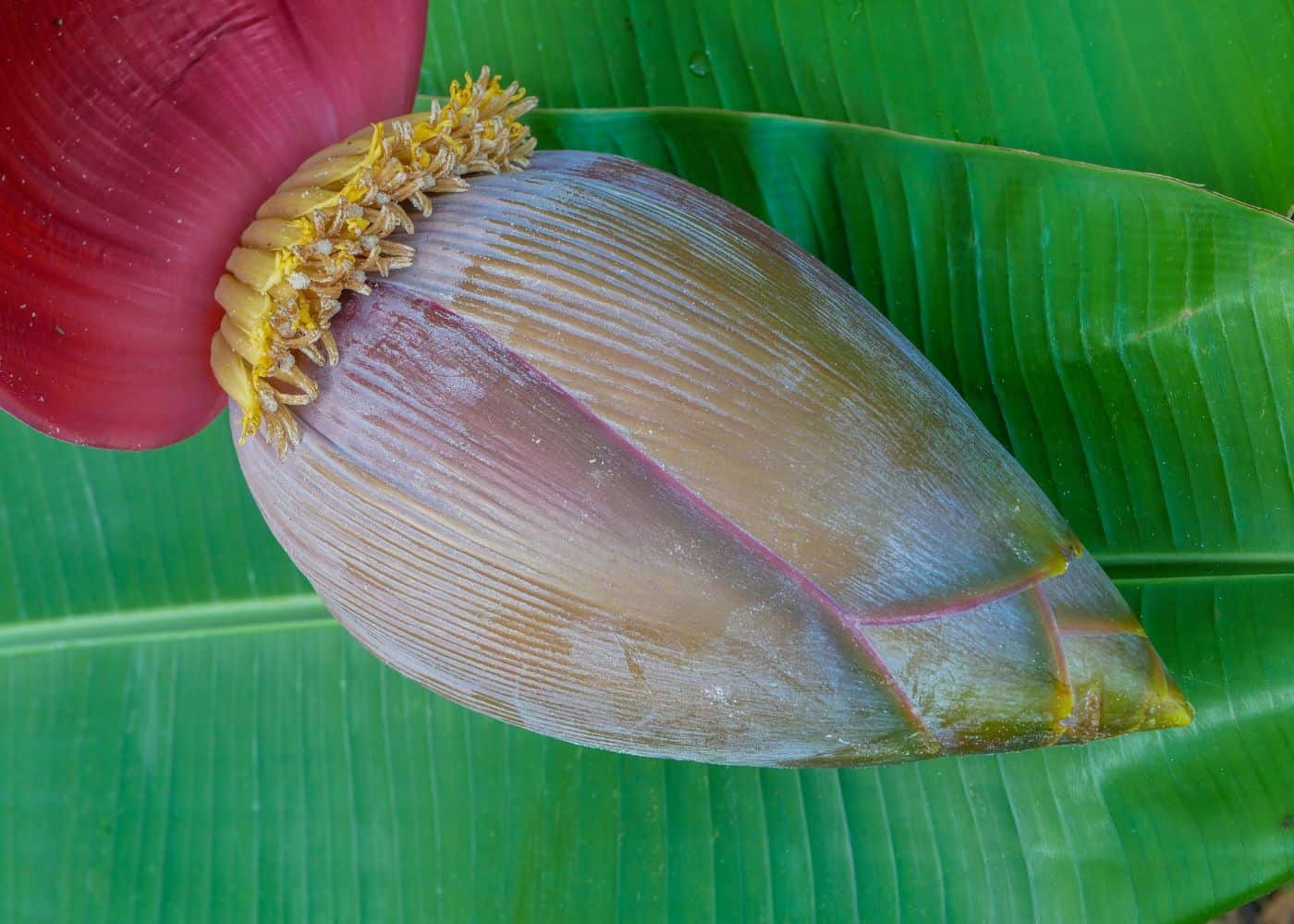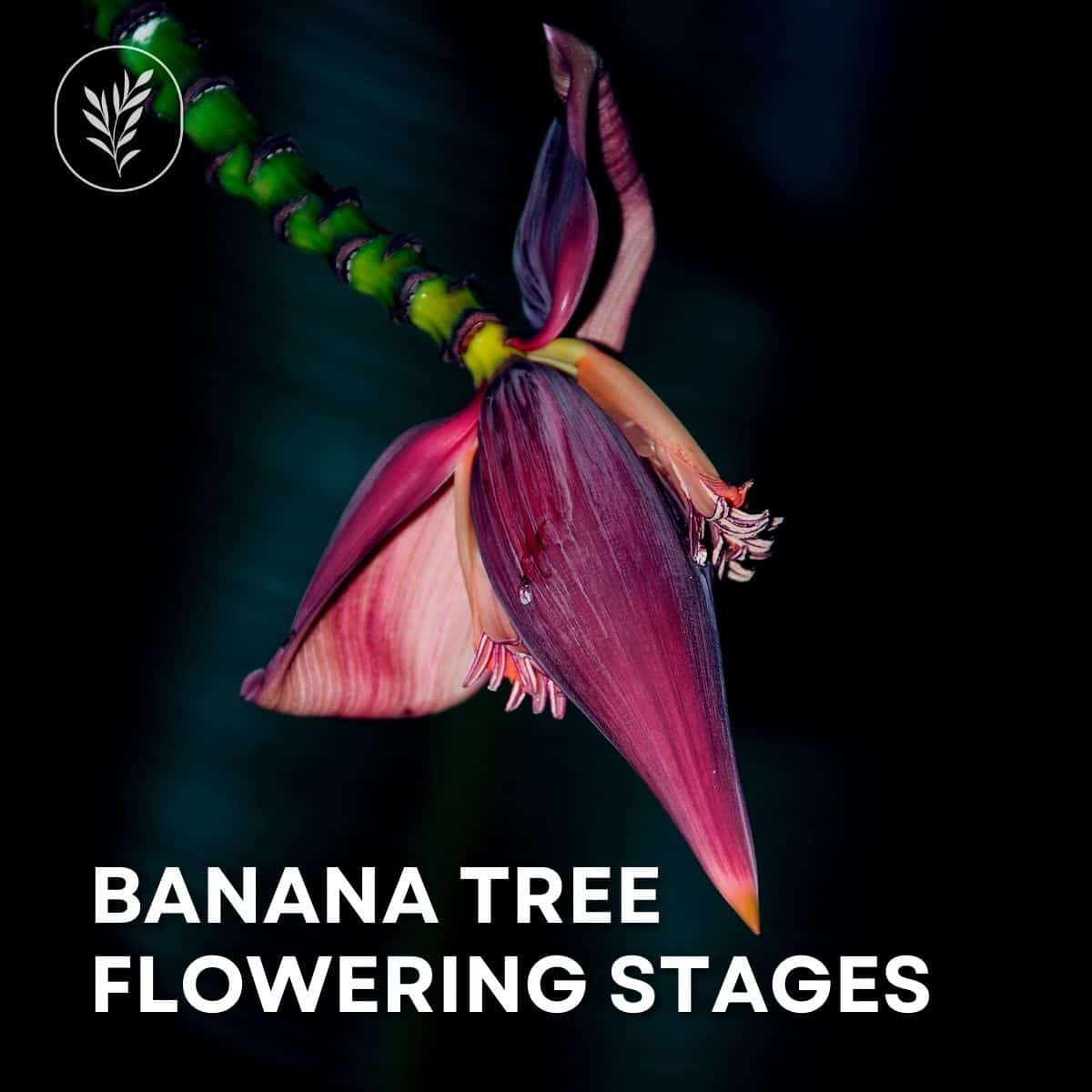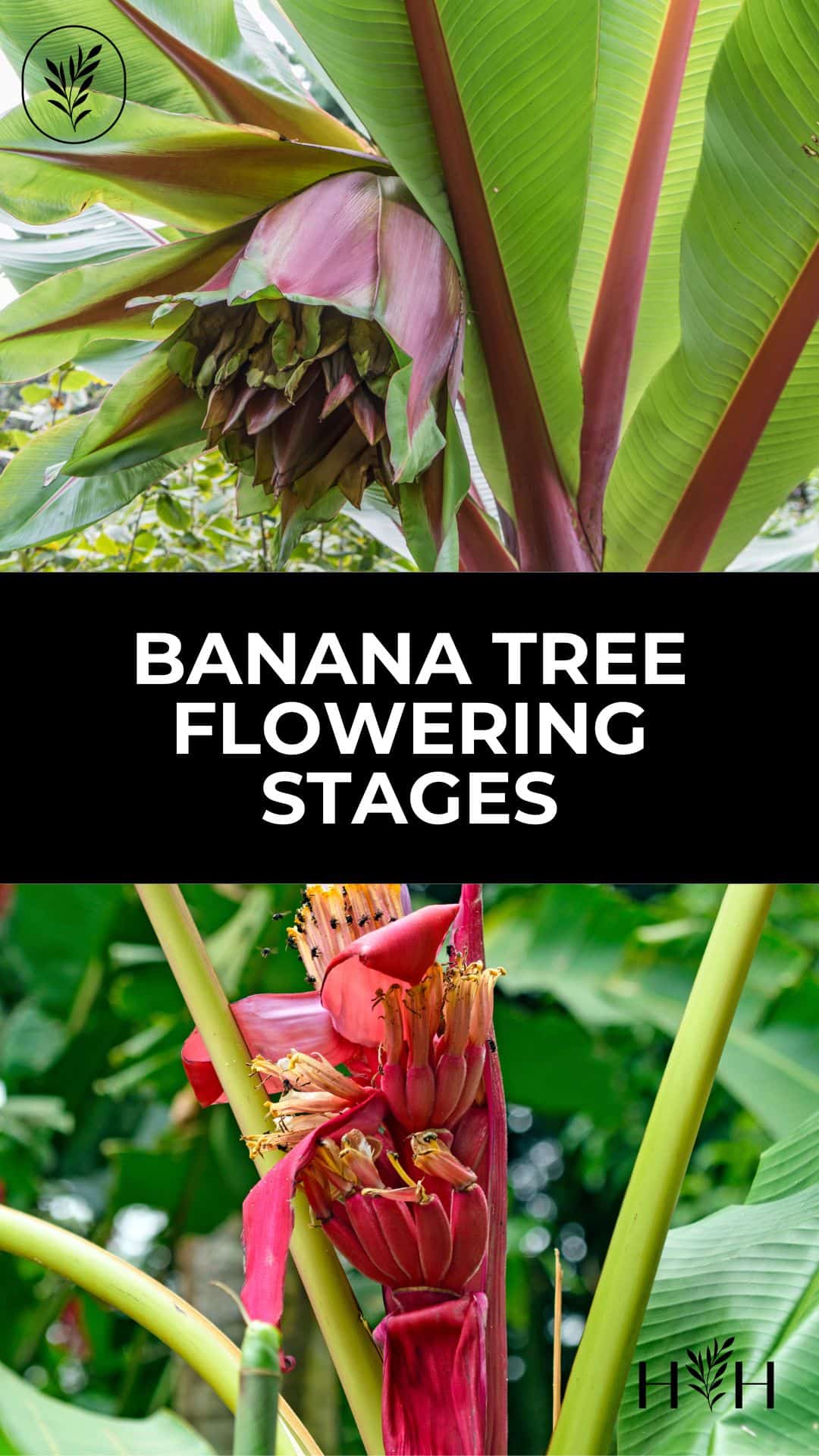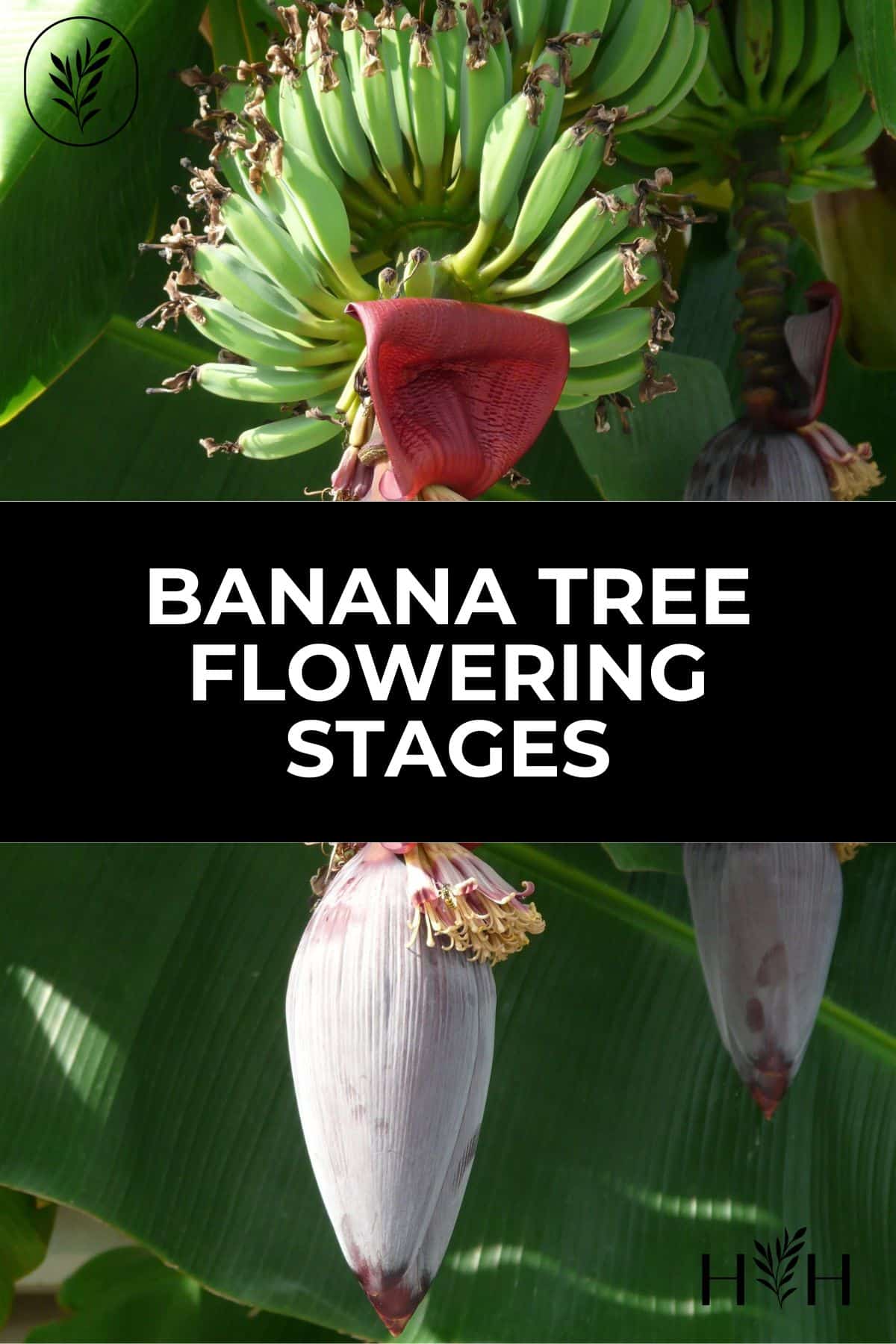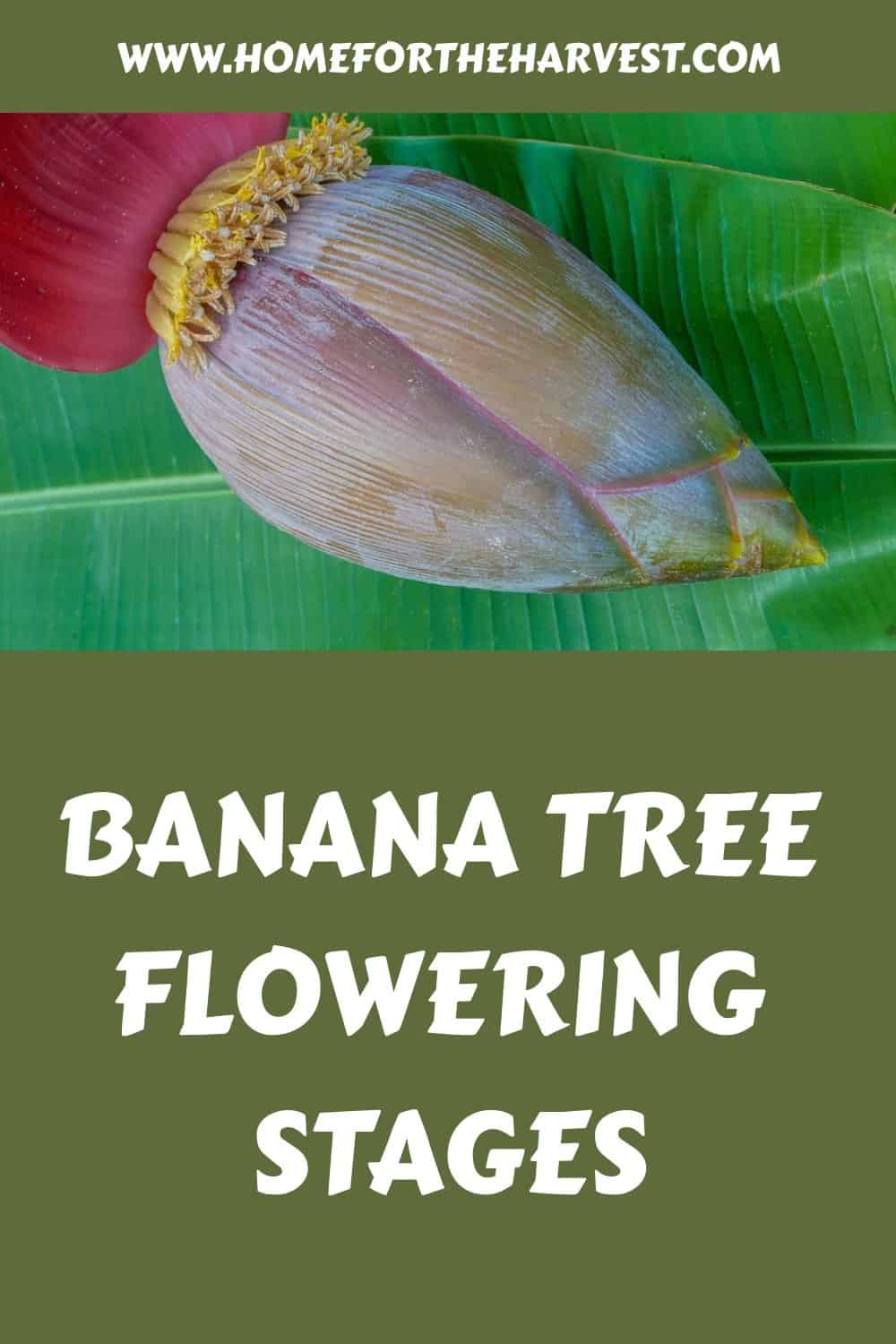Are you curious about the flowering stages of a banana tree? If so, then you’ve come to the right place. Banana trees have unique and interesting life cycles that involve several steps in order for them to produce fruit. Read on as we explore the different aspects of banana tree flowering stages and how they can help yield an abundance of delicious fruits.
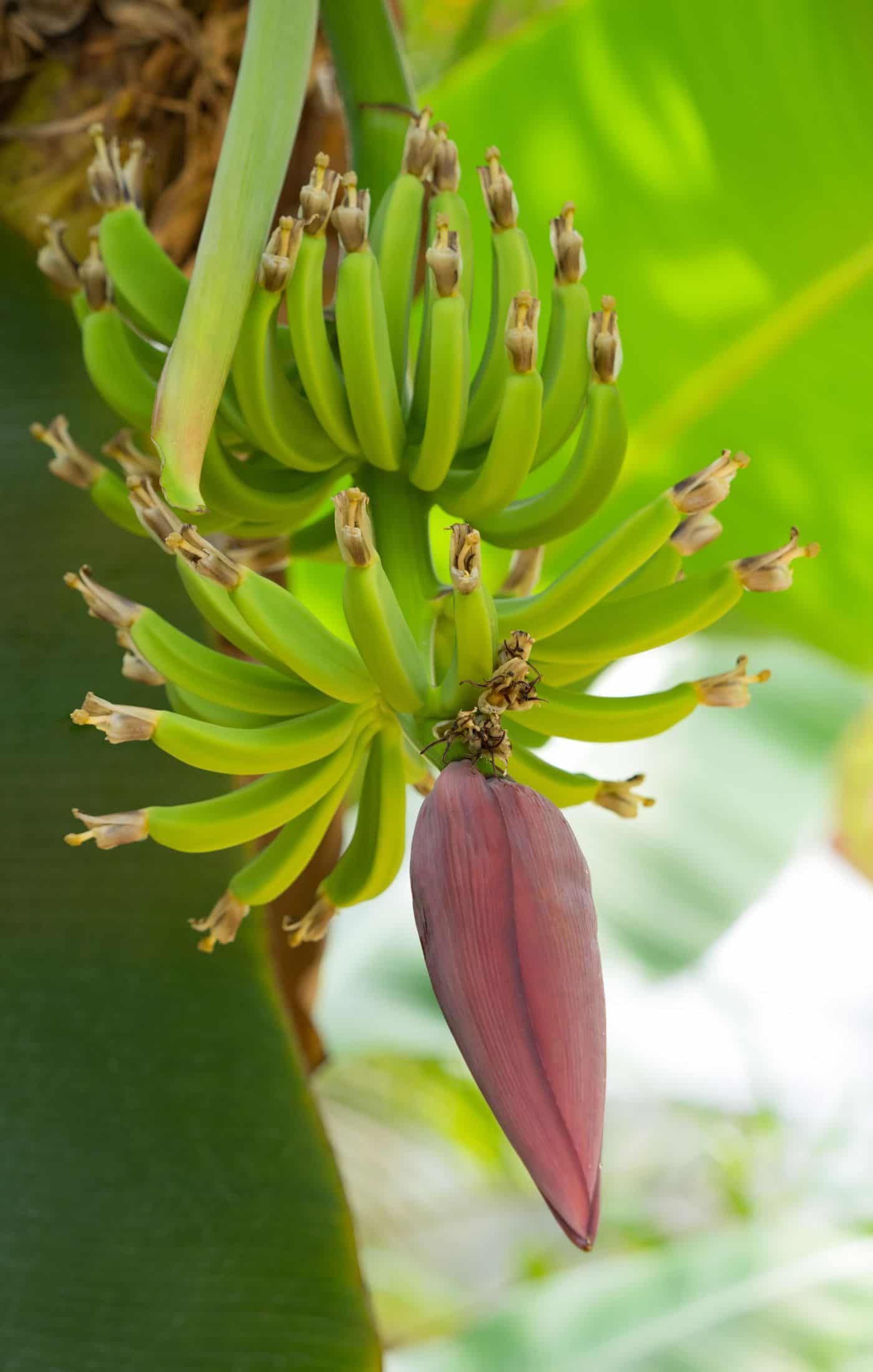
Banana tree flowering stages
Banana plants go through three main phases:
- Vegetative growth
- Flowering
- Fruiting
Let’s go through these three stages, with a detailed focus on flowering and fruiting.
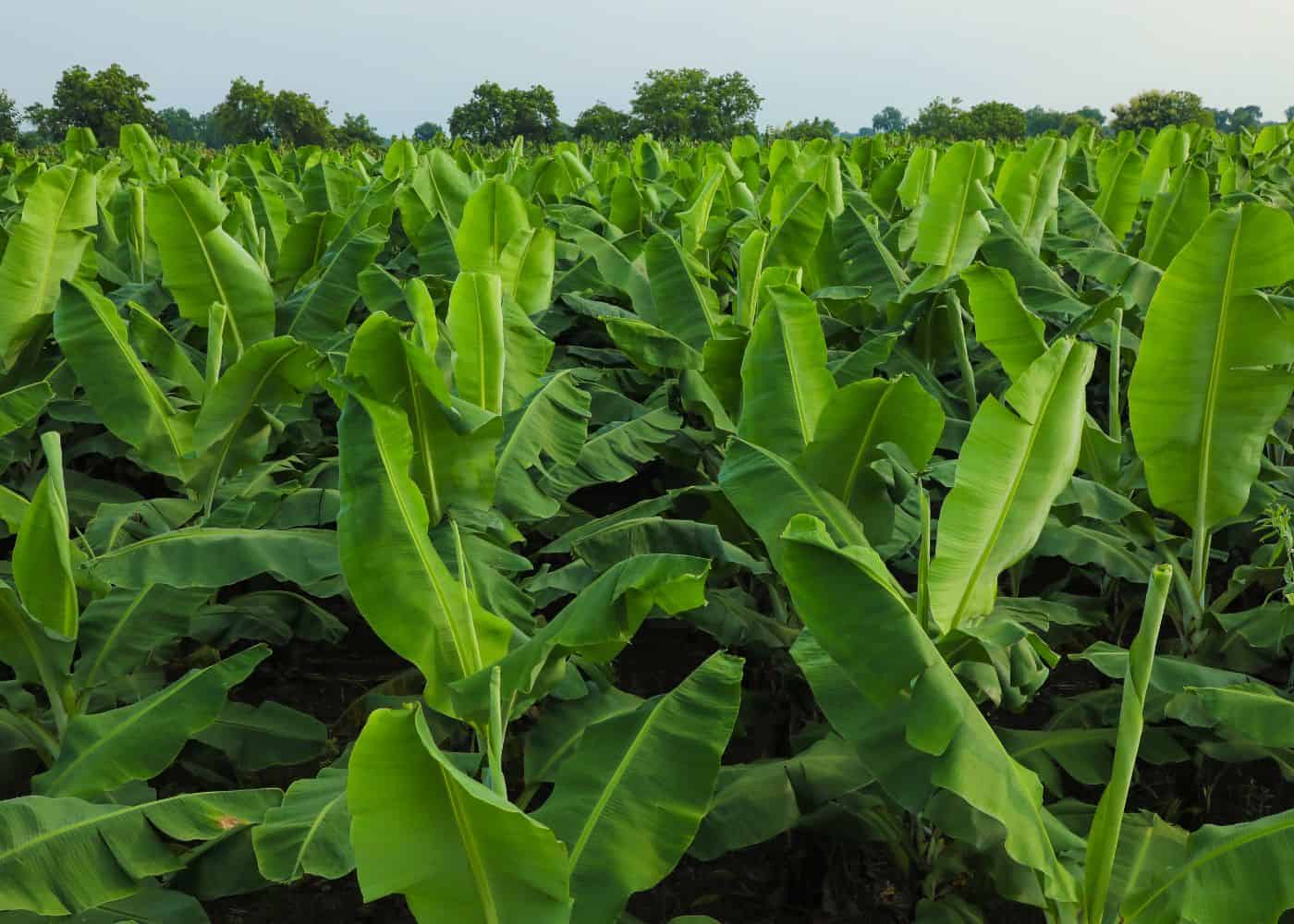
Vegetative growth stage
A newly planted pup will usually focus on growing roots and leaves for about a year before it is established enough to flower and fruit. And these herbaceous perennials have a very interesting flowering stage.
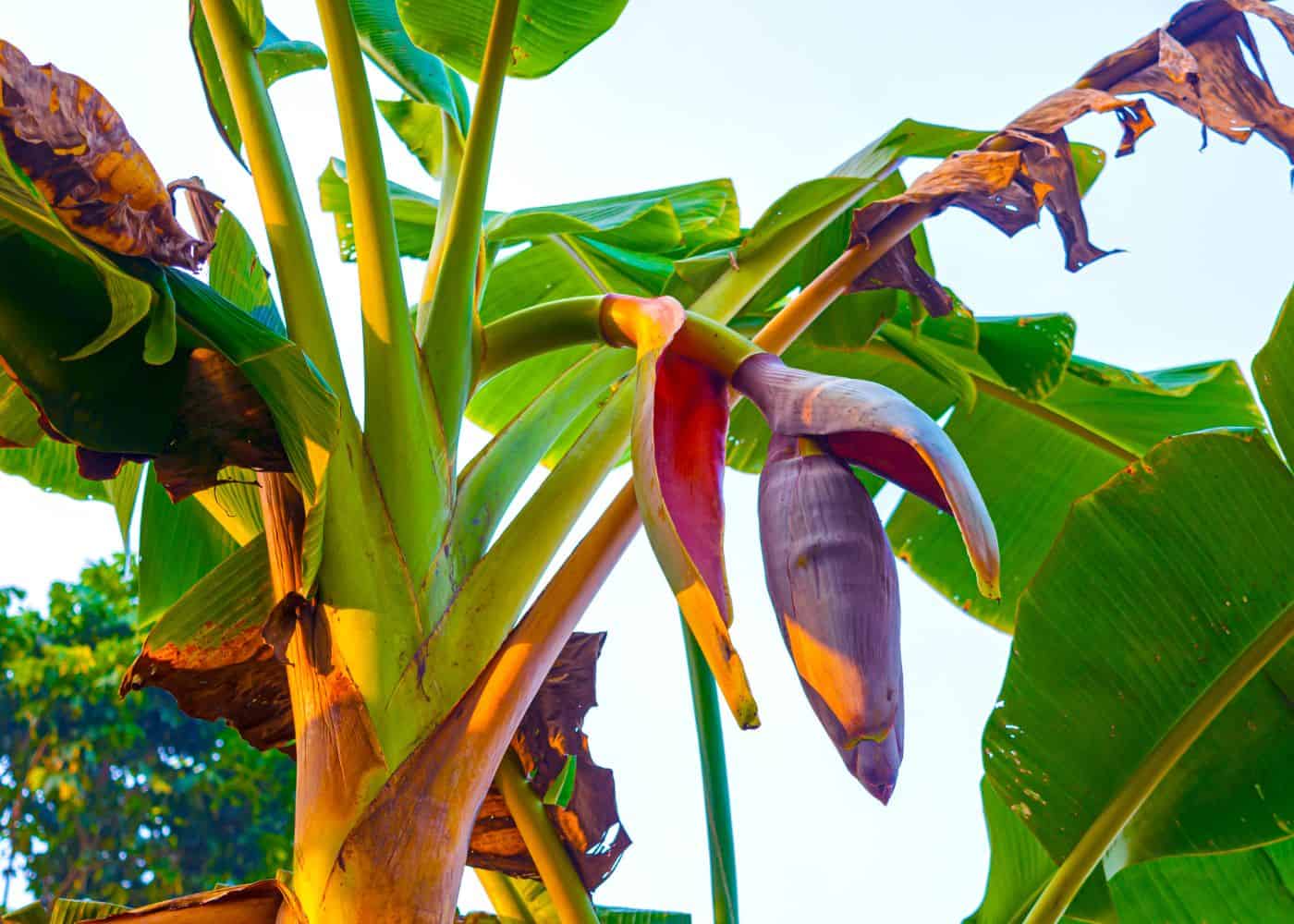
Flowering Stage 1: Inflorescence
When a banana tree is about 10 to 15 months old, a special part called the “inflorescence” starts growing in the center of the tree. The inflorescence is the banana plant’s flower stalk. When it develops, the tree is ready to make flowers and fruit! The process of making flowers is called “shooting.”
The inflorescence/flower stalk grows up through the middle of the trunk-like pseudostem and emerges between the leaves. The flower stalk is called a rachis, and it grows long enough that it hangs downwards between the leaves.
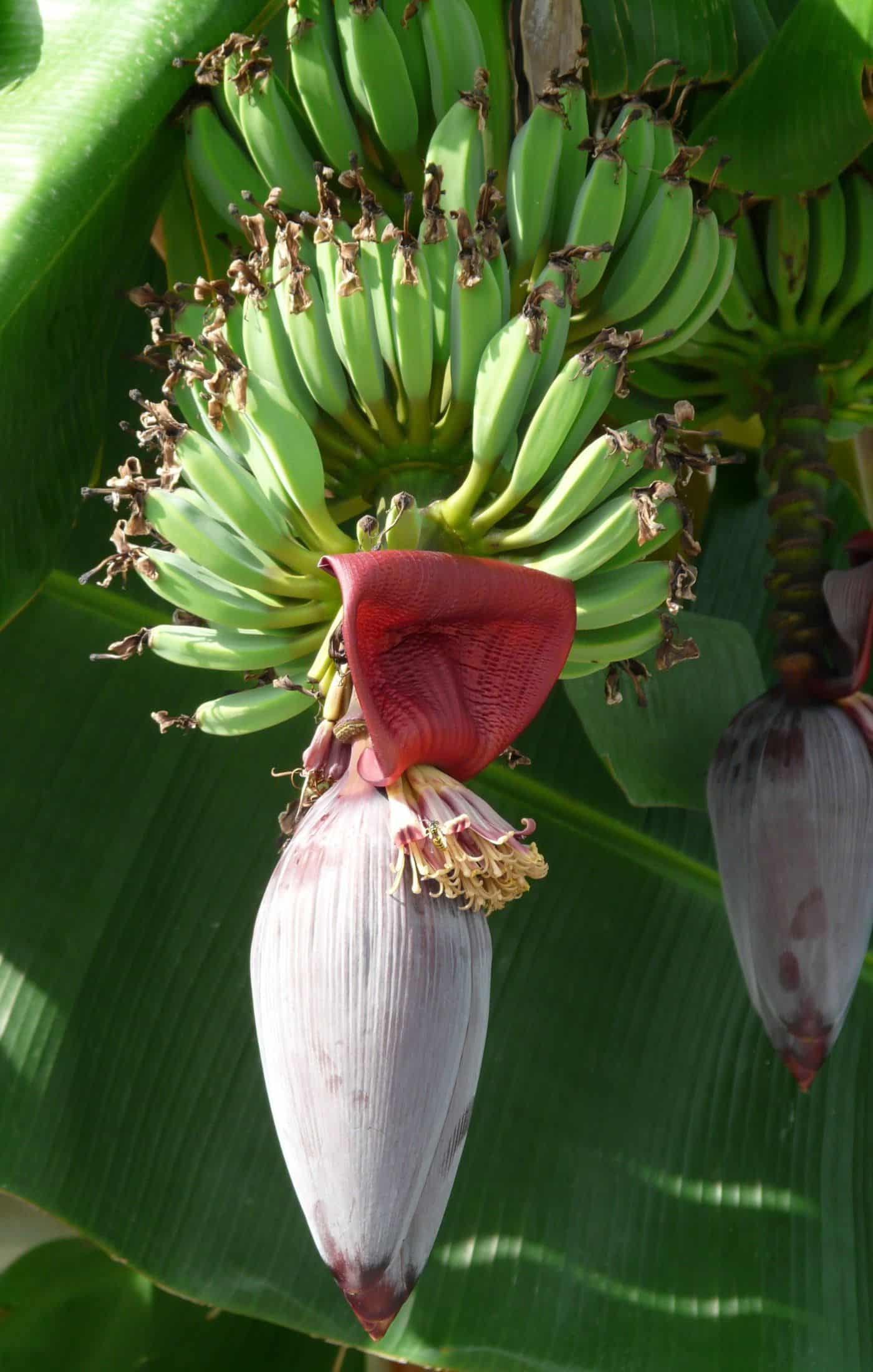
Flowering Stage 2: Flower bud
At the end of the rachis is a large purple pod (although not always purple). This is the bud, and is shaped like a teardrop. It is large and heavy, and protects the male flowers that will appear later. The purple pod/bud/berry is made of leaf-like structures called bracts. The pod starts to open and drop bracts as the true flowers pop out.
The female flowers are the flowers that actually produce bananas, and they are located on the rachis up above the whole purple pod/bud. The female flowers grow in clusters, called “hands”. Behind each flower blossom is its ovary, which later develops into a banana. Since the clusters of flowers are called “hands”, individual bananas are referred to as “fingers”.
The male flowers do not produce fruit. They are the downward-facing cluster of flowers right up against the purple teardrop-shaped bud. You can cut of the bud and the flowers (below the forming bananas) at this point.
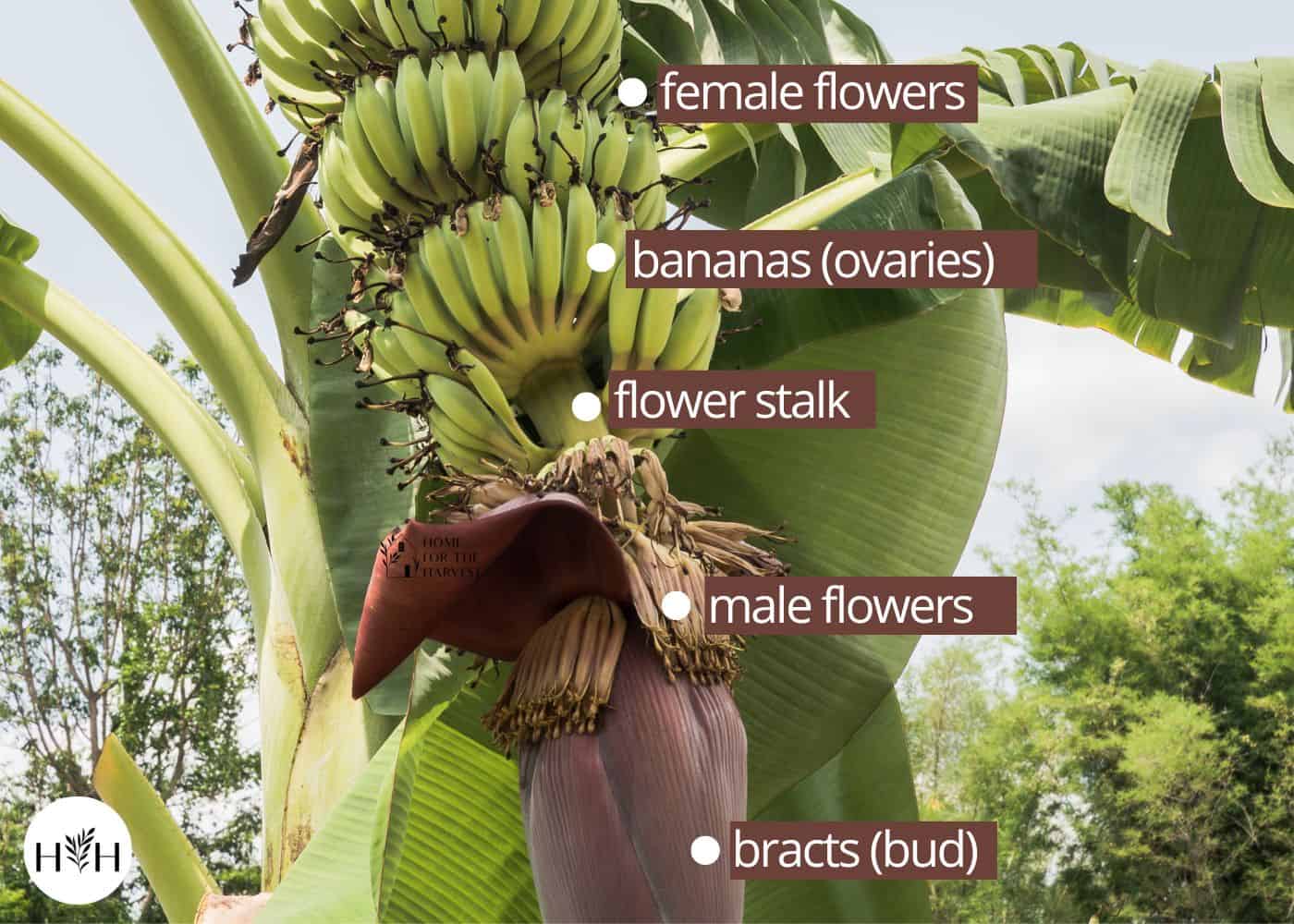
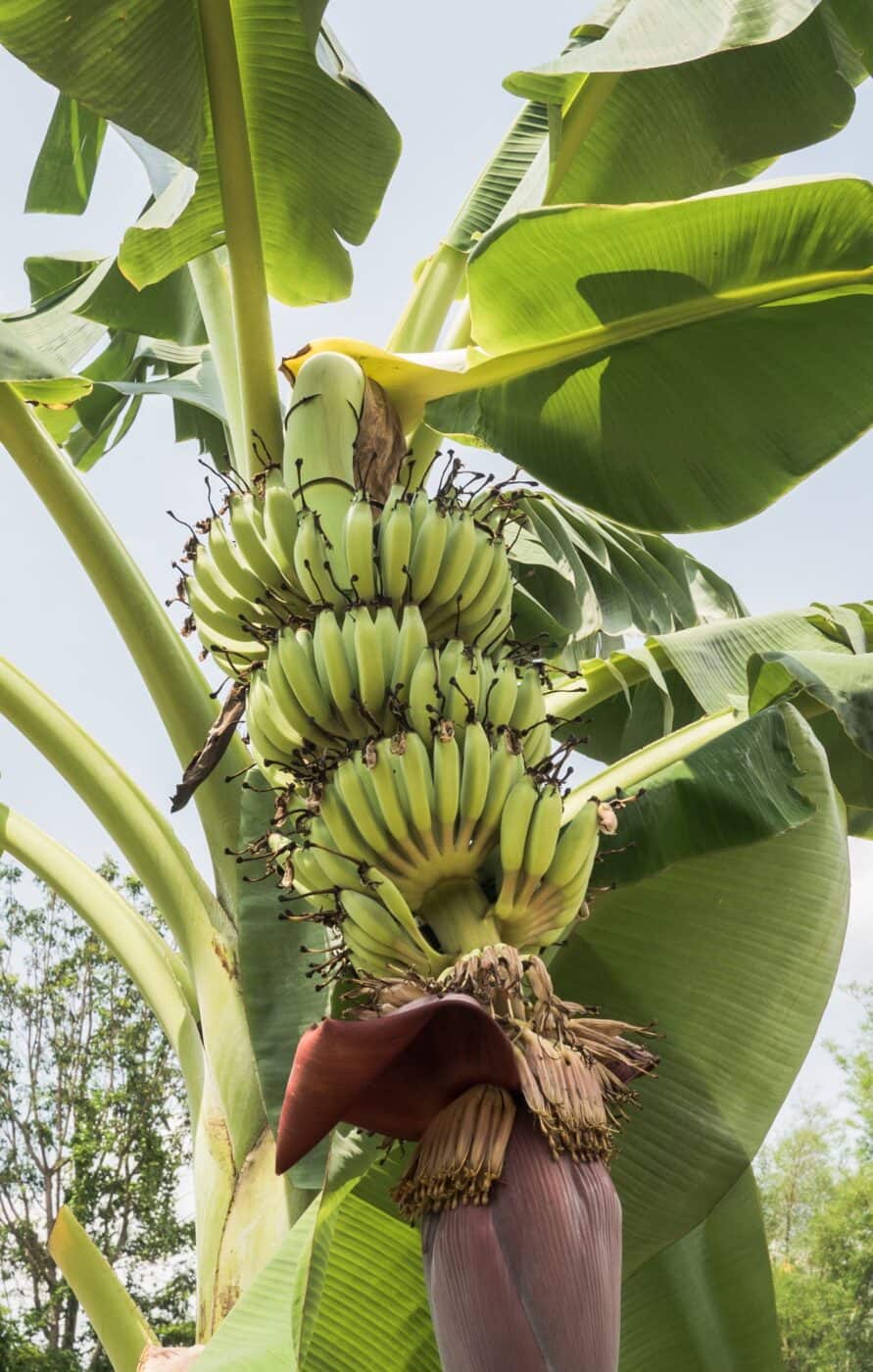
Flowering Stage 3: Bud removal
Unlike most other plants, the female flowers do not need to be pollinated by the male flowers for the fruit to form. Each banana fruit is a mature ovary that forms behind the flower, whether or not the flower is successfully pollinated. Pollination is not an essential part of growing bananas.
Most gardeners snap a few photos of the teardrop-shaped bud before cutting it off to let the plant focus on growing the bananas. The female flowers bloom before the male flowers, so it makes sense to cut off the teardrop-shaped bud and allow the plant to grow the bananas without expending energy on the bracts.
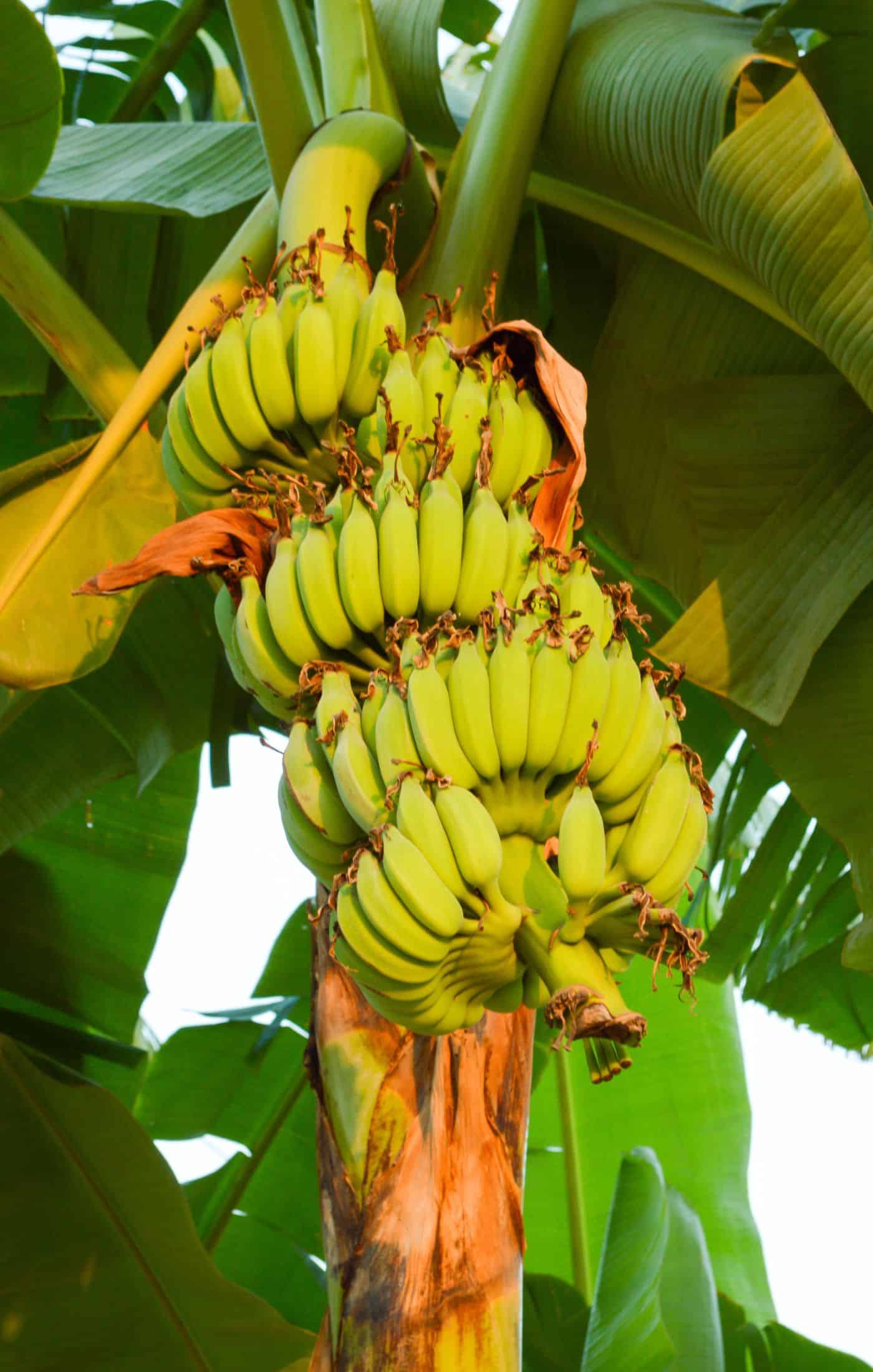
Fruiting stage
It usually takes 3-5 months for bananas to grow from the time that the flowers first appear. Each trunk-like stalk only produces one crop of bananas. After harvesting the bananas, cut the stalk back at ground level. The rhizomatous roots will send up new stalks which will in turn fruit and flower.
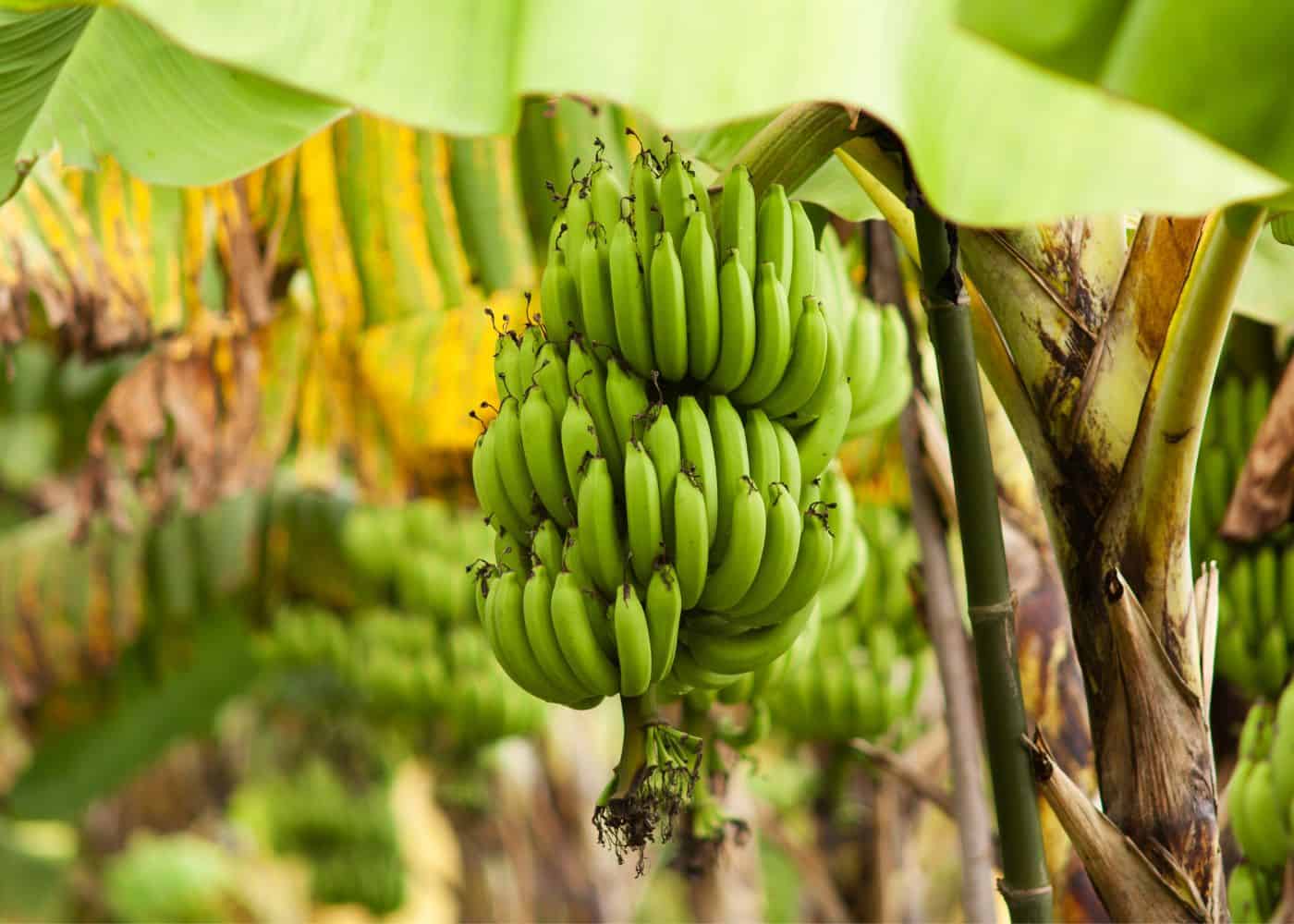
Fertilization and nutrient needs
Fertilizing your banana tree is an important part of ensuring it grows healthy and strong. A balanced fertilizer should be applied every two weeks during the growing season (spring through fall). This will help to ensure that your banana tree has all the nutrients it needs for optimal growth.
When fertilizing, make sure to spread the fertilizer evenly around the base of the tree and avoid getting any on its leaves or fruit. You can use a hand spreader or a hose attachment for this purpose. It’s also important to water after applying fertilizer so that it can be absorbed into the soil more quickly.
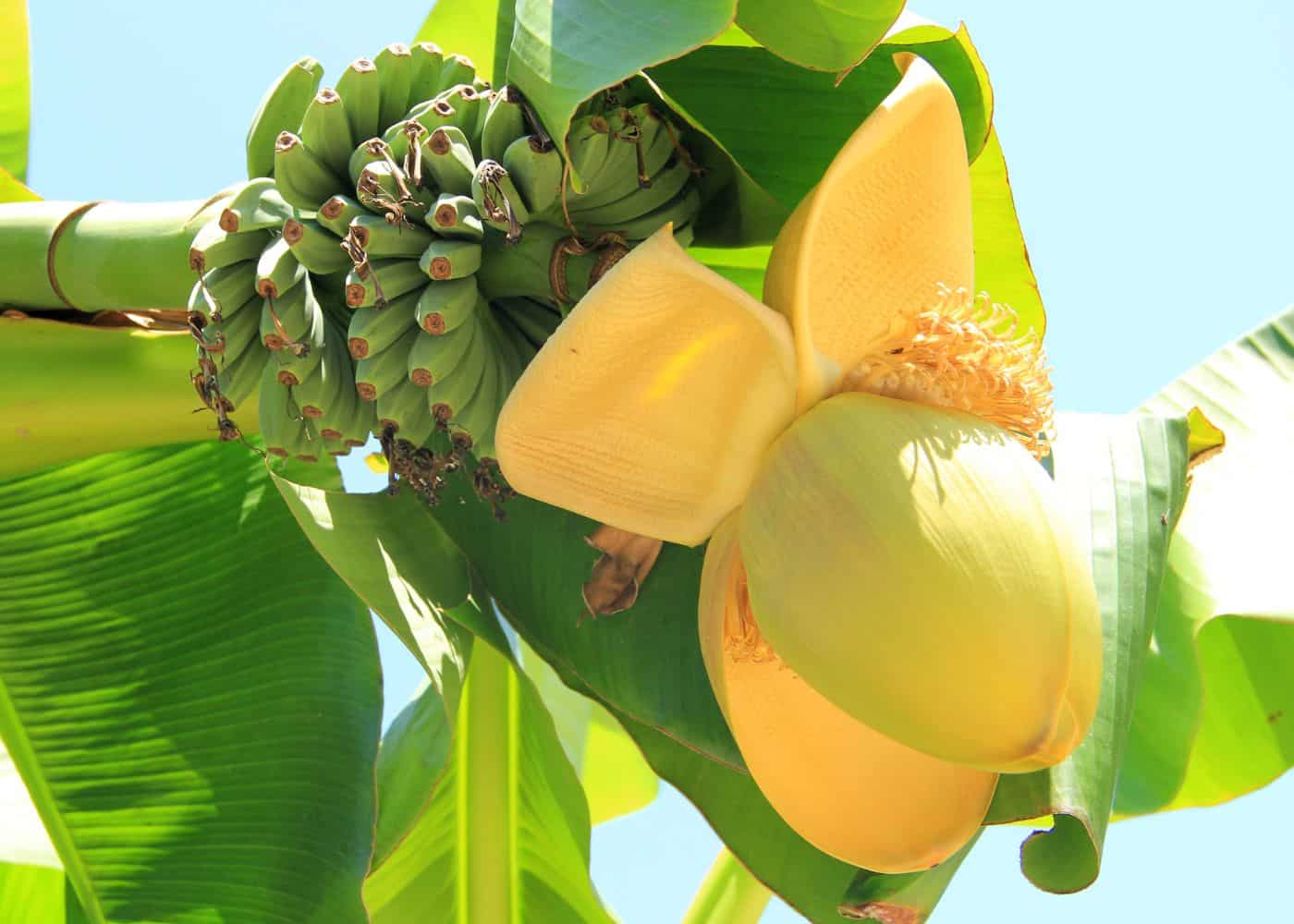
Banana trees are heavy feeders, meaning they need more nutrients than other plants in order to thrive. Fertilizer helps provide these essential nutrients, including nitrogen, phosphorus, and potassium which are key elements in promoting healthy growth and abundant fruit production.
It’s also important to remember that too much fertilizer can be just as bad as not enough; if you apply too much at once you could burn your plant’s roots or cause nutrient imbalances which could lead to stunted growth or even death of your banana tree. To prevent this from happening, always follow package instructions when applying fertilizer and never exceed recommended amounts.
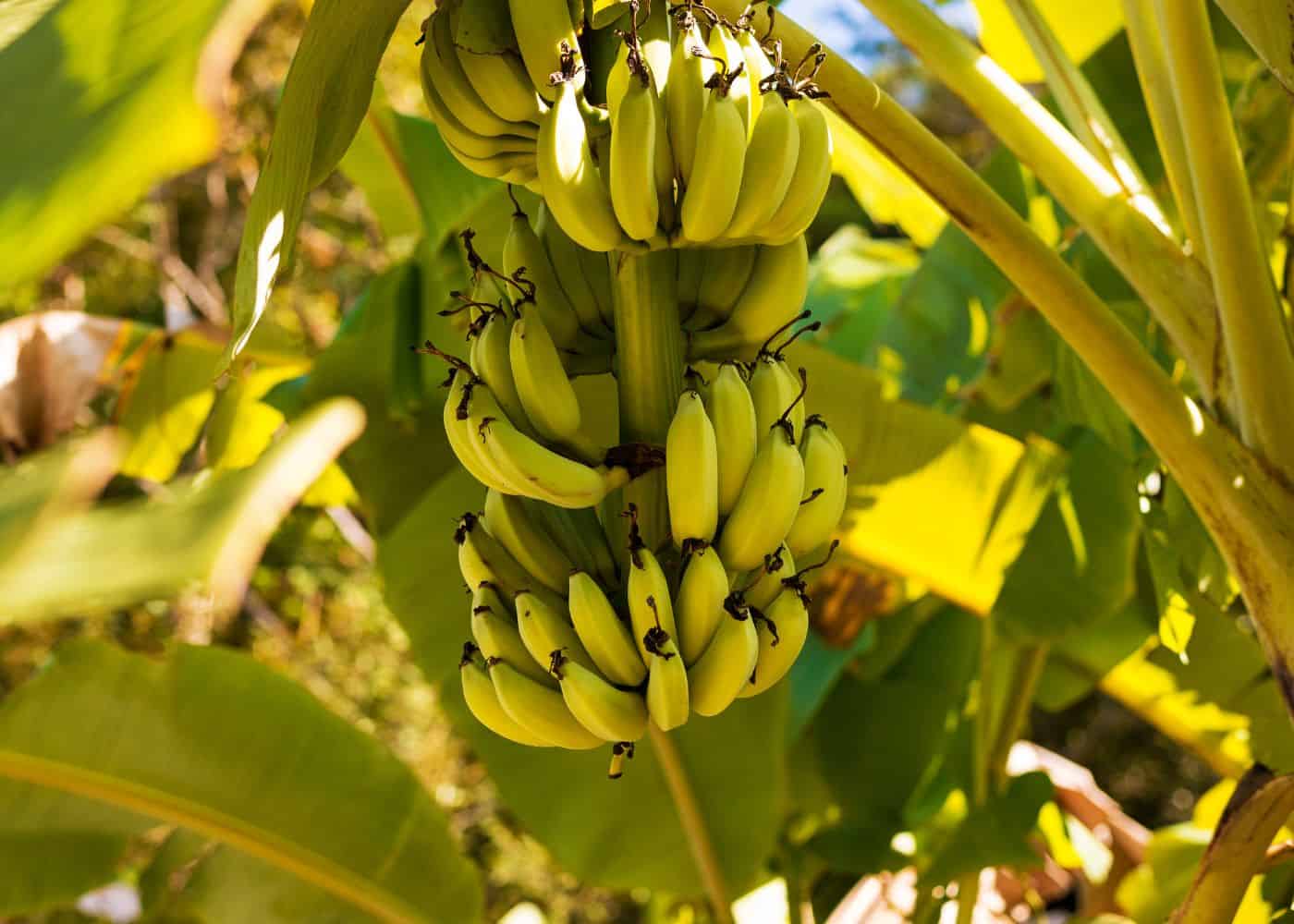
Harvesting
Harvesting bananas from your banana tree is an exciting and rewarding experience. When the time comes to pick them, it’s important to wait until they are fully ripe before taking them off the stem. Ripe bananas should be bright yellow with no green spots on them; if left too long, they may become overripe and mushy which can affect their taste and texture when eaten fresh or cooked in recipes.
To harvest a banana, start by gently pulling the fruit away from the stem using both hands. Be sure not to pull too hard as this could damage other fruits still growing on the same stem. Once you have removed one banana, move onto another one that looks ready for picking. If there are any small pieces of fruit left behind on the stem after harvesting, leave them there so they can continue ripening until they’re ready for picking later on down the line.
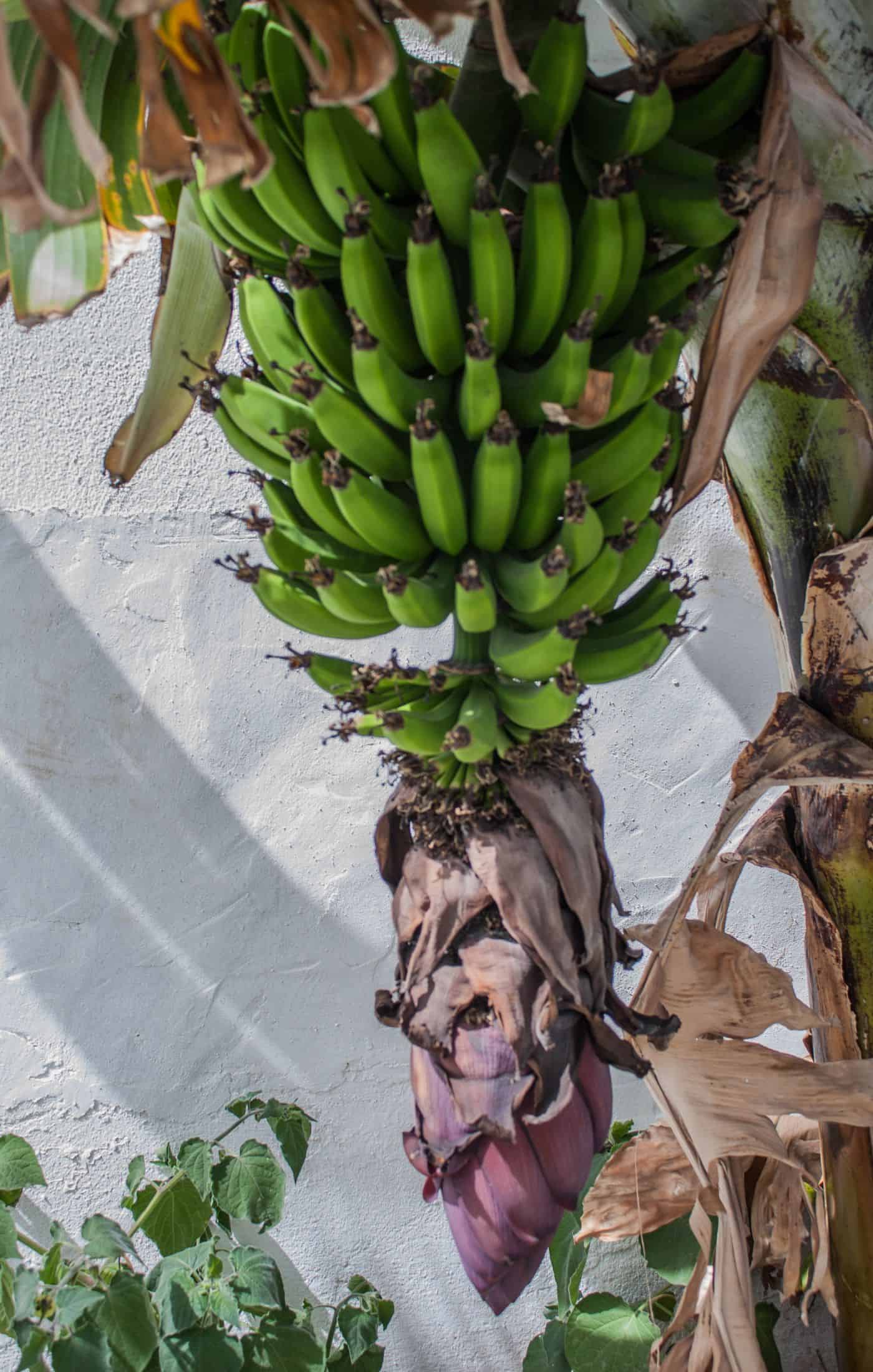
When storing harvested bananas at home, keep them in a cool dry place such as a pantry or cupboard away from direct sunlight or heat sources like radiators or stoves. This will help prevent over-ripening and ensure your bananas stay fresh longer. It’s also important to store different varieties of bananas separately since some types ripen faster than others – this way you won’t end up with all your fruits becoming overly ripe at once.
Bananas can also be frozen for future use in smoothies or baking projects such as breads and muffins – simply peel each piece of fruit before freezing it individually in airtight bags (or containers). Frozen bananas should last up to six months when stored properly; just remember to thaw out what you need ahead of time before adding it into recipes.
Finally, don’t forget about composting those peels after harvesting. Banana peels make great fertilizer for gardens due to their high potassium content which helps promote healthy plant growth. Simply bury your used peels around plants that need extra nutrients during their flowering stages; tomatoes particularly benefit from this type of natural boost. With these tips in mind, you’ll be able to enjoy delicious homegrown produce while helping out Mother Nature along the way.
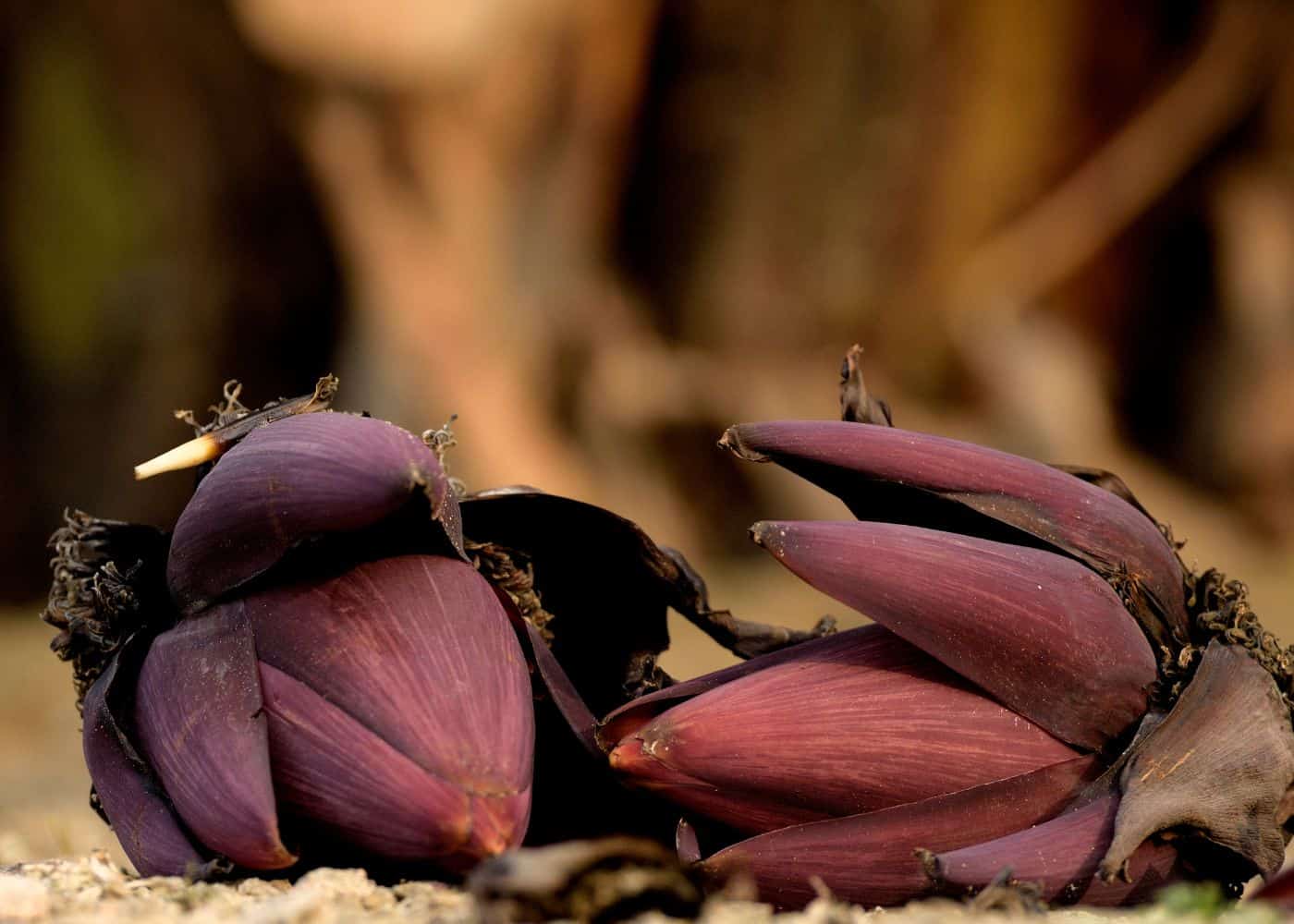
FAQs about banana tree flowering stages
How do you know when a banana tree is going to bloom?
Banana trees typically bloom between the months of June and October. The exact timing depends on a variety of factors, such as climate, soil type, location, and even the age of the tree. Generally speaking, you can expect to see blooms appear when temperatures are consistently warm and humidity is high. Look for signs like buds forming at the tips of stems or leaves turning yellowish-green in color. If your banana tree has been planted for more than two years it’s likely that it will start to flower soon. Pay attention to the signs and you’ll know when your banana tree is ready to bloom.
How long does it take for a banana tree to flower?
Banana trees typically take between 8 to 12 months to flower, depending on the variety. They require plenty of sunlight and warm temperatures for optimal growth, so if you live in a cooler climate it may take longer. The tree will also need regular watering and fertilizing throughout its growing season. Once the flowers appear, it can take another 3-4 months before the fruit is ready for harvest. With proper care and attention, your banana tree should be flowering within a year.
What to do when banana plant flowers?
When a banana plant flowers, it is important to remove the flower as soon as possible. This will help prevent pollination, seed formation, and divert energy back into the production of fruit. If left unchecked, the flowering process can cause a decrease in overall yield and quality of bananas produced. Additionally, removing the flower helps to promote healthy growth for future fruiting cycles. It is best to use pruning shears or scissors when removing any part of the plant so that you don’t damage other parts of it while cutting away unwanted material.
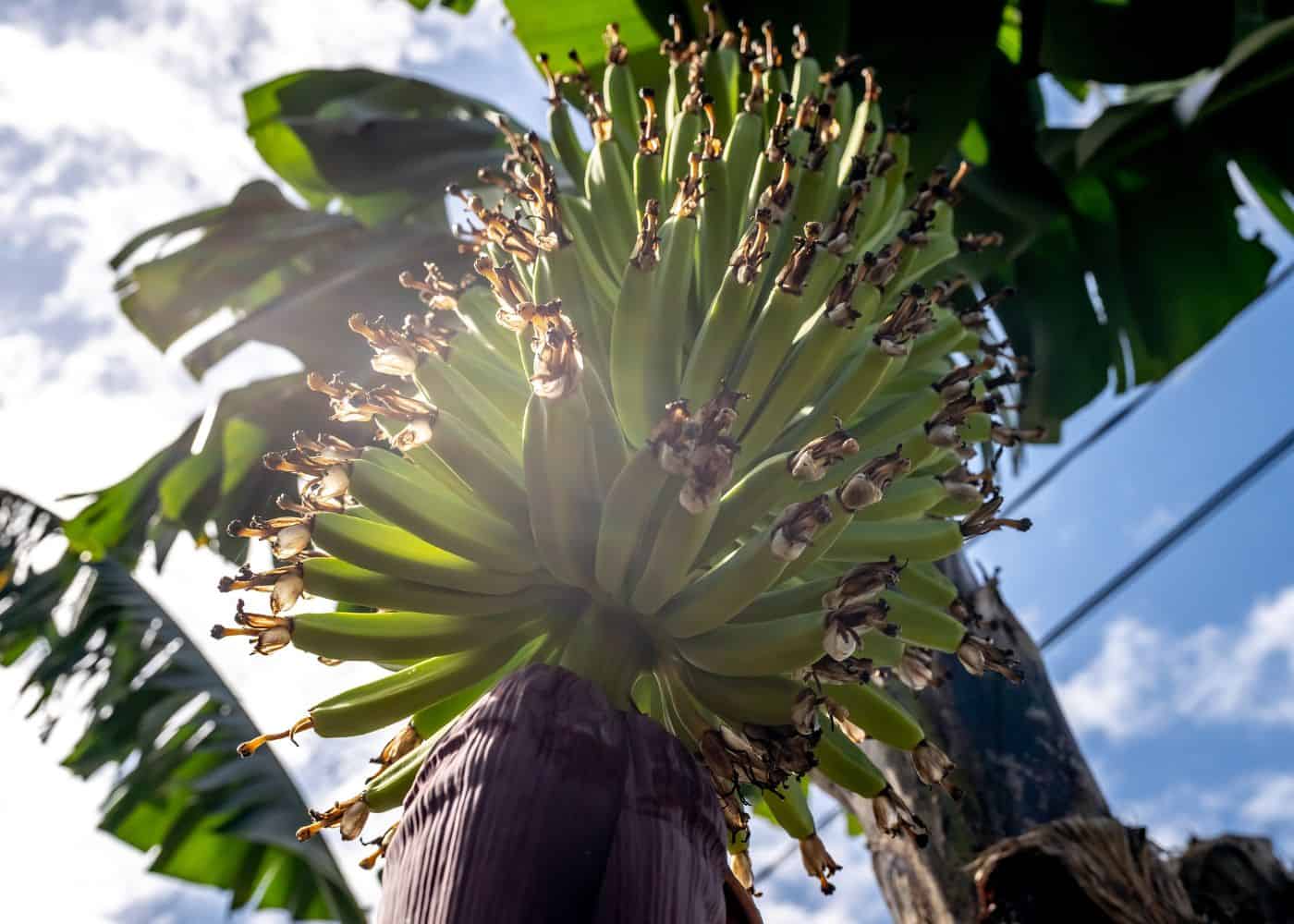
Before you go…
Banana trees are an amazing addition to any garden, and understanding the flowering stages is key to a successful harvest. With proper pollination, fertilization, and harvesting techniques, you can be sure that your banana tree will produce delicious fruit. Now that you know more about banana tree flowering stages, you can confidently tend to your own garden with ease.
Resources
- How fast does a banana tree grow?
- When do banana trees bear fruit?
- How do banana trees grow?
- Should you cut dead leaves off banana trees?
- How to plant a banana tree in 4 easy steps
- How to fertilize banana trees for high yields
- How to prune banana trees?
References
- Stewart, M. (2022, November 7). How to Care for a Banana Leaf Plant, Which Will Add Tropical Flair and Color to Sunny Rooms in Your Home. Martha Stewart. Retrieved February 17, 2023, from https://www.marthastewart.com/8335768/how-to-care-for-banana-leaf-plant
- Bous, S. (2022, October 18). How to Grow and Care for a Banana Plant Indoors. Better Homes & Gardens. https://www.bhg.com/gardening/houseplants/care/how-to-grow-a-banana-plant-indoors/
- Cape, M. (2019). How to Grow Banana Plants Like a Professional: Beginner’s Guide and Tips to Get You Started. Independently Published.
- Soluri, J. (2021). Banana Cultures: Agriculture, Consumption, and Environmental Change in Honduras and the United States. University of Texas Press.
Need more info?
Are you interested in learning more about banana tree flowering stages? Here are our best articles about it!


